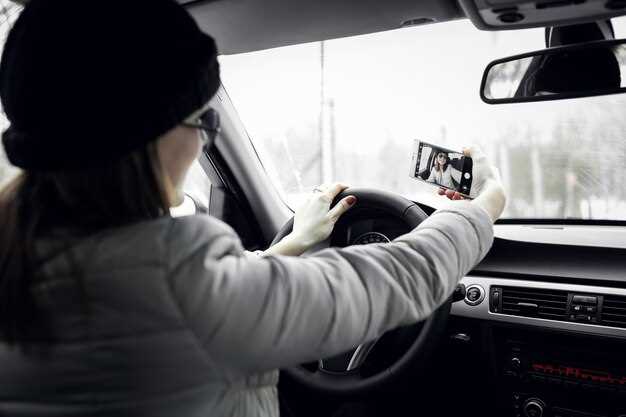
In today’s world, ensuring safety on the roads is a top priority for many drivers. One effective way to achieve this is by installing a dash cam, which serves as an essential tool for documenting your journeys and providing evidence in case of accidents or disputes. The proper installation of a dash cam can significantly enhance your vehicular security and give you peace of mind while driving.
Choosing the right location for your dash cam is crucial. It not only affects the quality of the footage but also ensures that it does not obstruct your view while driving. A carefully positioned dash cam can capture critical moments on the road, from stunning scenery to potential incidents. This article will guide you through the vital steps and considerations for installing a dash cam effectively, ensuring that you maximize its utility for security purposes.
Beyond the physical installation, understanding how to properly configure your dash cam settings can further improve its functionality. Features such as video resolution, looping recordings, and G-sensor sensitivity play a significant role in how well your dash cam performs in various situations. By following the outlined steps in this article, you will be equipped with the knowledge to set up your dash cam correctly and confidently, turning it into a robust ally in your driving experience.
Choosing the Right Dash Cam for Your Vehicle
When selecting a dash cam, consider the resolution first. A minimum of 1080p (Full HD) is recommended for clear footage. Higher resolutions, like 1440p or 4K, provide even more detail, which can be crucial for identifying license plates or facial features.
Next, evaluate the field of view (FOV). A wider FOV, typically between 120 to 180 degrees, captures more of the surroundings, helping to document events occurring outside the vehicle. However, excessively wide lenses may distort images on the edges.
Check for essential features such as night vision, which improves image quality in low-light conditions. Look for dash cams equipped with infrared or advanced low-light sensors that ensure clarity during nighttime driving.
Consider the video storage capacity. A dash cam usually uses a microSD card for recording. Ensure the dash cam supports larger cards, ideally 64GB or more, to store footage for longer periods without overwriting.
Look for loop recording, which automatically overwrites the oldest footage when storage is full. This feature ensures that you don’t miss critical incidents, even if you forget to clear your memory card regularly.
Evaluate the build quality and durability. A sturdy dash cam can endure temperature extremes and potential physical impacts. Choose models designed to function well under varying weather conditions and mounted securely.
Connectivity options are also significant. Models with built-in Wi-Fi or Bluetooth allow for easier video transfer to your smartphone or computer. Some dash cams even offer cloud storage or GPS functionality to track location and speed.
Lastly, read user reviews and consider brands known for reliability. A reputable manufacturer will offer support and firmware updates, enhancing the longevity and functionality of your dash cam.
Determining the Optimal Mounting Location
Choosing the right location for your dash cam is crucial for maximizing its effectiveness and ensuring comprehensive coverage. Here are key factors to consider when determining the optimal mounting position:
| Factor | Considerations |
|---|---|
| Field of View | Ensure the dash cam lens covers the widest possible angle of the road ahead. Typically, mounting it behind the rearview mirror provides a clear view while minimizing obstruction. |
| Visibility | Position the camera in a spot that does not obstruct the driver’s view. Avoid placing it in any location that could interfere with the vehicle’s safety features or cause legal issues. |
| Vibration and Movement | Secure your dash cam in a location that is stable and free from excessive vibration, which could affect video quality. Consider using vibration-dampening mounts. |
| Proximity to Power Source | Ensure that the mounting location is close to a power outlet for easy access to the vehicle’s charging system, minimizing cable clutter. |
| Temperature Exposure | Avoid mounting in areas exposed to extreme temperatures, as this can affect the performance and longevity of the device. Ideal locations are away from direct sunlight or heat sources. |
Generally, the best practice is to mount your dash cam behind the rearview mirror, which offers a perfect vantage point while ensuring minimal interference with your line of sight. Once you identify a suitable location, test the angle and adjust accordingly to achieve the desired coverage. Regularly check and clean the camera lens to ensure optimal recording clarity.
Wiring the Dash Cam for a Clean Installation
Wiring your dash cam correctly is essential for achieving a tidy and professional look in your vehicle, as well as ensuring optimal performance. Here are the key steps to follow for a clean installation:
-
Choose the Right Power Source:
- Identify whether to connect the dash cam to the vehicle’s battery or the fuse box.
- Using the fuse box allows for a cleaner installation with less visible wiring.
- Ensure that the power source is suitable for the camera’s voltage requirements.
-
Gather Necessary Tools:
- Wire strippers and crimpers.
- Fuses and adapters if using the fuse box connection.
- Adhesive clips or zip ties for securing wires.
-
Route the Wires Neatly:
- Start at the camera and run the cable along the headliner of your vehicle.
- Use adhesive clips or trim pieces to secure the wire out of sight.
- Minimize exposure by tucking wires behind panels and moldings.
-
Make the Connections:
- If using the fuse box, locate a fuse slot that is ignition-controlled.
- Use a fuse tap to connect the dash cam power wire to the chosen fuse slot.
- Connect the ground wire to a metal part of the vehicle, ensuring a good connection.
-
Test the Installation:
- Turn on the vehicle to check if the dash cam powers on.
- Ensure that it records as expected and that no wiring is loose or exposed.
-
Final Check and Clean Up:
- Double-check all connections and ensure there are no hindrances to driver visibility.
- Remove any excess cable using zip ties for a neat finish.
Following these steps will ensure a clean and effective installation for your dash cam, enhancing both security and aesthetics in your vehicle.
Configuring Settings for Optimal Performance
To ensure your dash cam operates at its best, it is crucial to configure its settings appropriately. Start by adjusting the video resolution. The higher the resolution, the clearer the footage, but this will also consume more storage space. A resolution of 1080p is often a good balance between quality and file size.
Next, consider the frame rate. A frame rate of 30 frames per second (fps) is generally sufficient for standard driving conditions, while 60 fps can provide smoother video for fast-moving scenarios. Choose based on your typical driving environment.
Another important setting is the camera’s field of view (FOV). A wider FOV captures more of the surroundings, which can be helpful in recording any incidents. However, be cautious as an excessively wide FOV may result in image distortion.
Also, enable features such as G-sensor or event recording. This function automatically saves important clips during sudden stops or collisions, ensuring crucial evidence is not overwritten.
Check the loop recording settings. This feature allows the dash cam to overwrite old footage automatically once the storage is full. Set the loop duration to a length that aligns with your review habits, typically between 1 to 5 minutes.
Additionally, configure the time-lapse or parking mode settings if your dash cam supports these features. Time-lapse can help capture long trips efficiently, while parking mode is essential for monitoring your vehicle when parked.
Lastly, always make sure your dash cam firmware is up to date. Manufacturers often release updates to improve performance and fix bugs, ensuring your device functions optimally.
Testing the Dash Cam After Installation

Once the dash cam is securely installed, it is crucial to test its functionality to ensure optimal performance. Begin by powering on the device; you should see a start-up screen or hear a notification sound indicating that the camera is operational. If there are issues with powering on, check the connections and the power source.
Next, conduct a test recording. Drive your vehicle for a short distance while observing if the camera captures video properly. Ensure that the recording indicator light is on, confirming that the camera is actively recording. After completing the test drive, review the footage to check for clarity, proper framing, and color balance. Look for any distortion or blurring, as these can affect the quality of the recordings.
Additionally, test the camera’s features, such as loop recording and G-sensor functionality. For loop recording, confirm that older files are being overwritten when the memory card is full. To test the G-sensor, simulate a sudden stop or impact to see if the camera detects the event and saves the footage accordingly.
Evaluate the camera’s angle and positioning during your test drive. Analyze whether the view is too narrow or obstructed, and adjust the camera’s angle if necessary for a broader and clearer perspective. Check the visibility of other vehicles, pedestrians, and road signs to ensure comprehensive coverage.
Finally, validate that any additional features, such as Wi-Fi connectivity or app integration, are functioning correctly. Ensure you can access the camera’s settings, download footage, and view live footage through connected devices.
Conducting these tests will help confirm that your dash cam is installed correctly and ready to provide reliable video evidence in case of incidents on the road.
Maintaining Your Dash Cam for Long-Term Use
To ensure your dash cam operates effectively over time, regular maintenance is essential. Start by keeping the lens clean. Dust, dirt, and smudges can obstruct the camera’s view, reducing image quality. Use a microfiber cloth to gently wipe the lens without scratching it.
Next, check the mounting system. Ensure that the camera is securely attached to the windshield or dashboard. Over time, adhesive mounts can weaken, leading to a potential loss of positioning. If you notice any detachment, reposition or replace the mount to maintain optimal angles for recording.
Periodically review and delete outdated footage. Most dash cams have loop recording, which overwrites the oldest videos when the storage is full. However, keeping too much old footage can clutter memory and slow down performance. Regularly transferring important videos to an external storage device can also help in this regard.
Additionally, inspect the power source. Dash cams commonly connect to your vehicle’s power supply or use rechargeable batteries. Check for loose connections or frayed wires, as these can cause power interruptions. If the battery is removable, consider replacing it when you notice decreased efficiency.
Lastly, update the firmware when prompted. Manufacturers often release updates that improve functionality and performance. Keeping your dash cam’s software up to date can enhance security features and compatibility with other devices.
